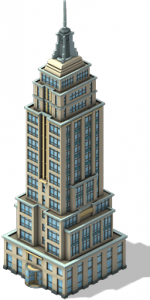Protein Machines – Part 1
 This month I want to kick off a new blog series, focusing on protein machines, the tiny molecular wonders that conduct the activities at a cellular level. First a bit of background. Cells are largely made of water and proteins. Think of the proteins as being like the bricks that make up a building or the parts that make up a machine (screws, washers, bearings, etc.). Proteins are made up of hundreds or thousands of even smaller units called amino acids, which are attached to one another in long molecular chains that are carefully folded to make the exact protein part that the cell needs (a brick, a cylinder or whatever component). The machines we will discuss in the coming months might have dozens or more protein components. The average microscopic mammalian cell contains about 10 billion protein molecules. To put that in perspective, the 102 story tall Empire State Building incorporates about 10 million individual bricks. Understanding what all the various protein components in a cell do can be very difficult, but microbiology is increasingly shedding light on some of this wonderfully and curiously designed machinery. “My substance was not hid from thee, when I was made in secret, and curiously wrought in the lowest parts of the earth” (Psalm 139:15).
This month I want to kick off a new blog series, focusing on protein machines, the tiny molecular wonders that conduct the activities at a cellular level. First a bit of background. Cells are largely made of water and proteins. Think of the proteins as being like the bricks that make up a building or the parts that make up a machine (screws, washers, bearings, etc.). Proteins are made up of hundreds or thousands of even smaller units called amino acids, which are attached to one another in long molecular chains that are carefully folded to make the exact protein part that the cell needs (a brick, a cylinder or whatever component). The machines we will discuss in the coming months might have dozens or more protein components. The average microscopic mammalian cell contains about 10 billion protein molecules. To put that in perspective, the 102 story tall Empire State Building incorporates about 10 million individual bricks. Understanding what all the various protein components in a cell do can be very difficult, but microbiology is increasingly shedding light on some of this wonderfully and curiously designed machinery. “My substance was not hid from thee, when I was made in secret, and curiously wrought in the lowest parts of the earth” (Psalm 139:15).
Posted on October 2, 2017 by dwoetzel.
